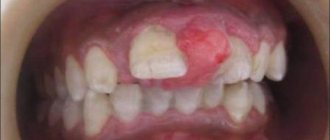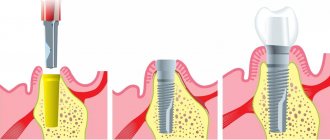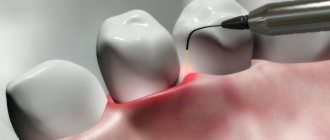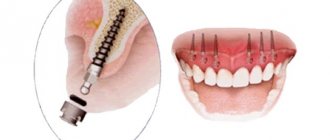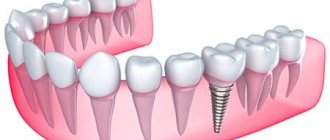Author of the article:
Anastasia Vorontsova
Photo: Anesthesia before implantation
Anesthesia for
dental implantation is one of the important aspects of the treatment process.
High-quality anesthesia is the key to physical and psychological comfort during any surgical intervention.
Today, there are several methods of pain relief that can relieve the patient of pain and reduce discomfort during the treatment process.
With the help of your attending physician, you can choose the most appropriate method of pain relief so as not to feel discomfort throughout the entire period of implant installation. The success of the operation depends not only on the professional skills of the implantologist, the quality of the implants and equipment.
No less important is the patient’s psychological attitude, especially his lack of fear before the operation.
Modern medicine adheres to the rule: pain relief during surgery should always be reasonable and adequate.
- Adequate anesthesia means pain relief to the required minimum.
- Validity means the correct choice of anesthesia method depending on the specific case. In this case, the doctor uses the main principle: “do no harm.” The question arises: what harm can be done? The fact is that severe pain causes great harm to the body. But painkillers can also cause harm. The more serious the surgery, the more dangerous the complications can be.
Methods
Anesthesia
during implantation can be carried out in one of the following ways:
- General anesthesia.
- Local anesthesia.
- Combined pain relief.
Local anesthesia
It is the most popular method of pain relief during dental implant surgery.
When using local anesthesia, only the area being manipulated is subjected to anesthesia, while the patient is conscious.
Types of local anesthesia:
Photo: Carrying out local anesthesia during implantation
- Surface or application. The area that will undergo surgery is sprayed with lidocaine. The positive thing is that there is no syringe. The disadvantage of this method is superficial pain relief.
- Infiltration (“freezing”) is not quite deep, but one of the most common. It is carried out using an injection of anesthetic. Positive aspects are good tolerability and sufficient analgesic effect. The downside is that the pain relief effect lasts no more than an hour.
- Conduction anesthesia is ideal for operations performed on bone tissue. Painkillers are injected into the nerves surrounding the base of the teeth. This type of anesthesia allows, for example, to turn off the sensitivity of a certain area of the jaw.
- Trunk anesthesia is the strongest. Injected into the base of the skull, affecting the trigeminal nerves, blocks the jaw nerve endings.
Local anesthesia has only one serious contraindication to use: individual intolerance to the anesthetic.
But while allergies to novocaine are quite common, allergies to modern anesthetics are extremely rare.
Pros and cons of local anesthesia
Pros:
- No pain during the implant installation procedure.
Minuses:
- May cause an allergic reaction.
- Exposure time limit.
General anesthesia
Photo: Implantation under general anesthesia
- Despite the fact that this type of pain relief has moved to a new level, dental implantation under anesthesia is still not recommended.
- The risk of dental treatment under anesthesia significantly exceeds the risk of implantation itself.
- When using general anesthesia during surgery, during the entire period of its influence, the constant presence of a competent anesthesiologist is necessary next to the patient.
Implantation using general anesthesia is indicated in cases where it is not possible to perform it under local anesthesia.
The essence of general anesthesia comes down to the introduction of anesthetics into the body, due to which the person is immersed in deep sleep.
During this time, the doctor installs the implants completely painlessly for the patient.
Combined pain relief
- It is an intermediate option and involves the use of any method of anesthesia with the simultaneous use of sedatives.
- Thanks to this effect on the body, the patient is conscious, but does not feel pain at all and is absolutely calm.
The combination of local anesthetic drugs becomes an excellent alternative to general anesthesia if there are contraindications to it.
Dental implantation – surgery! Anesthesia is required!
Dental implantation is currently one of the most advanced and therefore popular techniques in the field of maxillofacial surgery, which is used by thousands of people every year. Those who are just planning to install dentures on implants should understand that although this procedure is performed quickly, it still involves surgical intervention, which means it necessarily involves the use of anesthesia. Moreover, dental implantation under general anesthesia , as many people mistakenly think, is not always carried out, since much more often it is sufficient to use local anesthesia, which is less harmful to the body.
Find out more about the benefits of dental implants
Indications and contraindications
In what cases are implants implanted under anesthesia:
- If you have allergic reactions to local anesthetic drugs.
- If the patient has a low pain threshold. When local anesthesia does not provide the desired effect.
- With an increased gag reflex due to the presence of dental instruments in the oral cavity.
- If you have a history of hypertension and cardiovascular pathology with a simultaneous combination of increased fear and anxiety before surgery.
Contraindications
Before the operation, the anesthesiologist finds out from the patient various nuances of his health condition and the list of medications taken.
Installing implants under general anesthesia is contraindicated:
- If the patient has a history of severe kidney and liver pathology.
- In the case of a myocardial infarction less than six months ago.
- Presence of heart failure and heart disease.
- After suffering infectious diseases.
- Cerebrovascular accident.
- After a stroke.
- With exacerbation of bronchial asthma.
- During the period of acute respiratory disease.
- In the presence of diabetes mellitus and severe diseases of the endocrine system.
- While taking certain medications, such as hormones.
- With a “full stomach”. Food intake should be at least six hours, and liquids - four, until the moment of anesthesia.
- While the patient is intoxicated.
Side effects
Local and combined anesthesia quite often provokes various complications. The patient may develop Quincke's edema or acute urticaria as a reaction of the body to the action of Ultracaine or its analogues. Depending on the characteristics of each patient, the degree of manifestation of symptoms differs.
In severe cases, the patient's condition worsens, suffocation, skin rash, severe itching, and allergic rhinitis may occur. Such signs require immediate cessation of anesthetic administration and symptomatic therapy.
However, most often complications arise when using general anesthesia, since the drugs have a direct effect on the central nervous system and the centers responsible for heartbeat, breathing and blood circulation. During implantation, the patient may experience sudden jumps in blood pressure, respiratory rhythm disturbances, shortness of breath, convulsions, vomiting, and tachycardia.
During the period of recovery from anesthesia, there are signs of anxiety, memory impairment, and emotional arousal. The patient reports nausea and headache. As a rule, such manifestations disappear after 30-60 minutes, but sometimes accompany the person until the next day. This condition does not require special treatment unless there are convulsions, loss of consciousness, or a critical decrease or increase in body temperature.
Patient Reminder
Side effect
The use of general anesthesia for dental implantation is quite rare, due to the presence of possible side effects:
- Heartbeat.
- Fluctuations in blood pressure.
- Complete or partial memory loss.
- Laryngospasm.
- Psychomotor agitation upon recovery from anesthesia.
- Hiccups.
- Bronchospasm.
- Vomiting upon awakening.
- Increased motor activity.
- Respiratory rhythm disturbance.
- Convulsive muscle twitching.
- Respiratory depression.
Will it hurt after implantation?
Implantation without pain is possible, but many patients are concerned about how they will feel when the anesthesia wears off. Naturally, when a large number of implants are implanted, it is impossible to avoid swelling and some pain. But the pain syndrome is easily relieved with anti-inflammatory drugs, which are prescribed by the doctor after the procedure.
You can find out what kind of anesthesia for dental implantation is used in dentistry “Implant Expert” in 1905 at a free consultation by making an appointment through the return form in the site header.
Anesthesia for implantation
To carry out implantation, local anesthesia is sufficient. If a deeper effect is required, sedation may be used.
- Sedation is a new generation of anesthesia.
- Classical anesthesia completely turns off the patient’s consciousness.
- Sedatives act a little more gently: they can put the patient into a state close to sleep.
- The duration of sedation is from two to ten hours.
- The patient is able to maintain contact with the dentist during the operation, but at the same time he lacks emotions such as pain, fear, anxiety.
- At the end of the operation, the patient can go home independently.
This feature of anesthesia is very important for patients. An important point is also the absence of contraindications to this method of anesthesia.
But, it should be borne in mind that sedation, like any other type of anesthesia, is used strictly according to indications.
Implantation under regional anesthesia
Conduction anesthesia is considered the preferred method of pain relief during dental implantation. How long does the operation take? On average, placing one implant takes at least an hour, so the correct selection of an anesthetic drug is an important factor. Long-term anesthesia is achieved with drugs such as Ultracaine, Bupivacaine, Mepivacaine; it is advisable to choose anesthetics without the addition of vasoconstrictors - vasoconstriction under the influence of adrenaline can cause ischemia of the tissues of the surgical field, which subsequently worsens the engraftment of the implant.
Anesthetic for use in dentistry
For anesthesia of the upper and lower jaw, various techniques of conduction anesthesia have been developed, the choice of which depends on the location of the surgical intervention. For interventions on the upper jaw, the following types of anesthesia are performed:
- Infraorbital. Anesthesia can be carried out intraorally and extraorally, at the discretion of the doctor, while sensitivity in the area of the incisors, canines, first premolars, the mucous membrane of the anterior part of the jaw, as well as half of the upper lip is blocked. Used for implantation of the anterior group of teeth.
- Tuberal is anesthesia at the maxillary tubercle. The area of tissue in the area of the three upper molars is numbed, so this type is used for painless implantation of the posterior group of teeth.
- Incisal anesthesia is performed when implanting incisors, as it blocks the sensitivity of the anterior part of the upper jaw.
For anesthesia of the lower jaw, two types of conduction anesthesia are used - mandibular and torus, which differ in the number of blocked nerves. The sensitivity of the lower jaw is provided by three nerves: the inferior alveolar, lingual and buccal. Mandibular anesthesia blocks only two of them, without affecting the buccal nerve, which is responsible for the sensitivity of the anterior portion of the mucous membrane of the alveolar process. Based on this, the preferred type of anesthesia for implantation in the lower jaw is torusal anesthesia. Patients are often concerned about how long anesthesia lasts after implantation - on average it is about 3 hours.
Anesthesia of the lower jaw
Premedication – assistance with anesthesia before dental implantation
Premedication is a course of taking medications aimed at calming the nervous system (central and peripheral) in conjunction with anesthesia. For example, if a large-scale operation is planned to install a large number of implants, the patient already experiences strong anxiety and fear during the examination, and the anesthesiologist calculates a course of premedication. 1 - 2 days before the proposed operation, the patient takes sedatives, for example, valerian infusion, Seduxen, Glycised and others.
Price
Unlike the implantation itself, the cost of anesthesia is calculated based on the number of hours a person remains under general anesthesia. The time to enter and exit from such a state should also be taken into account. Statistics show that the average cost of an hour of anesthesia in dental clinics varies from 6,000 to 18,000 rubles. To install 6 implants, on average you need to spend 4-5 hours.
It is also worth adding here the time to recover from anesthesia, that is, 2 hours. The more teeth a patient has to restore, the longer the procedure will take and, therefore, the more money will have to be paid for general anesthesia. Due to the high cost, many patients prefer local anesthesia.
Depending on the clinic itself, its pricing policy, as well as the medications chosen, the amount for the operation will be completely different. So, the average cost for general anesthesia can be in the range of 12-15 thousand rubles. This is if the operation takes no longer than an hour. With further continuation, each injection increases the price of anesthesia by 3000 per 20 minutes.
To make the difference between general and local anesthesia clear, we will indicate the average cost for other types of pain relief. Thus, infiltration is estimated at 500-3000 rubles, conduction anesthesia will cost up to 4000, and applicator anesthesia will be the cheapest and does not cost more than 1500 rubles.




